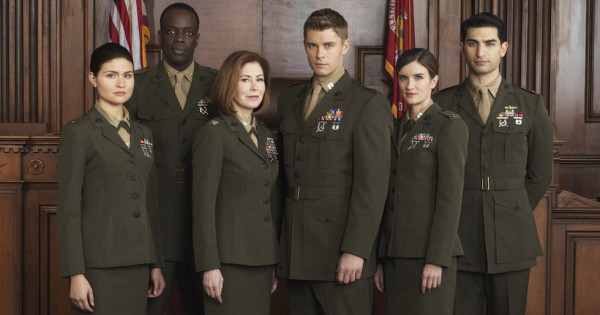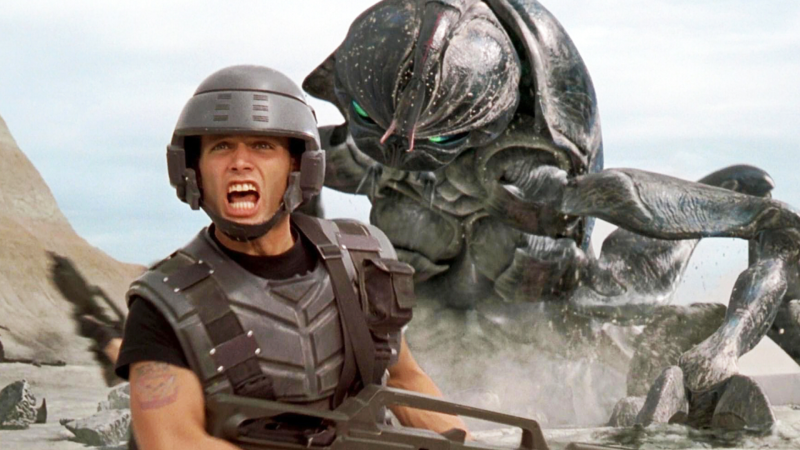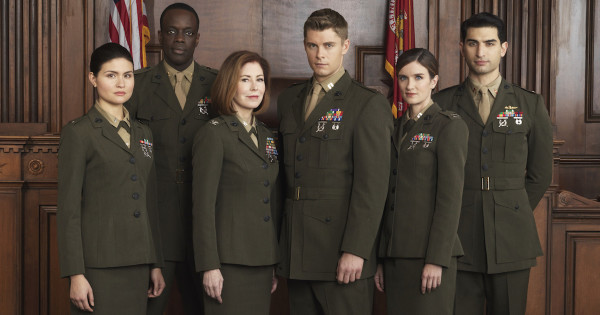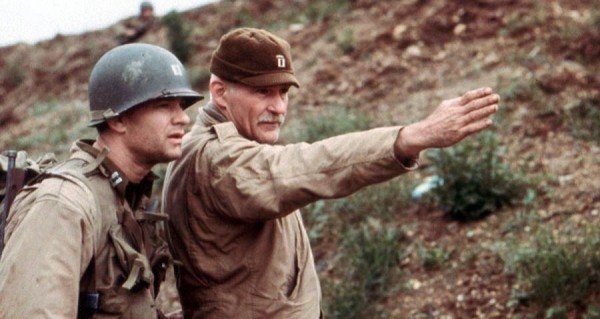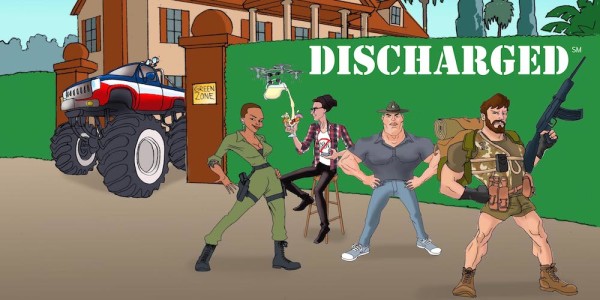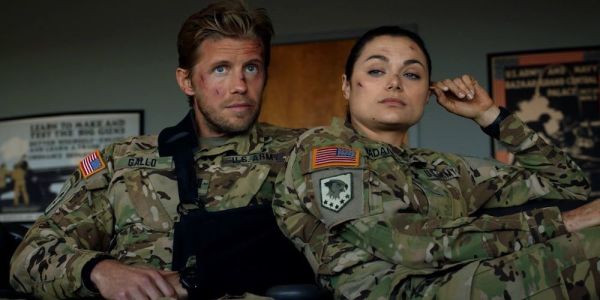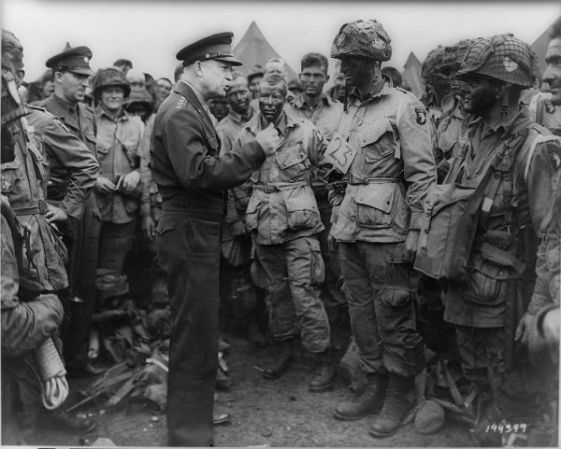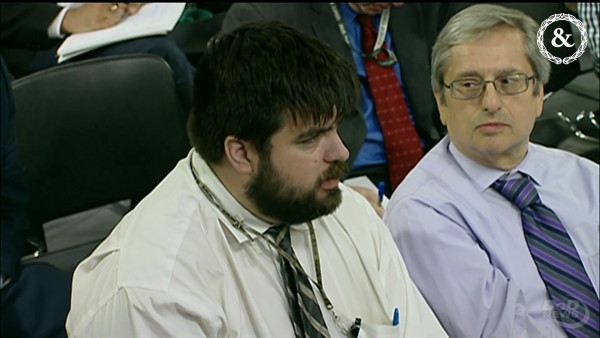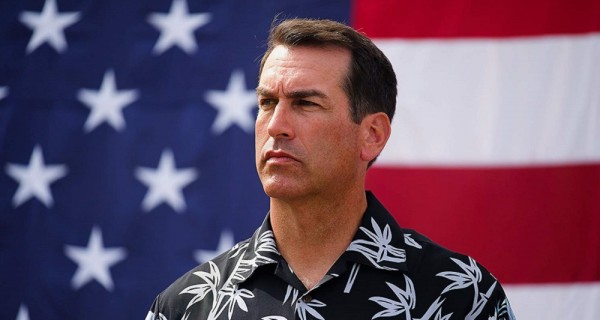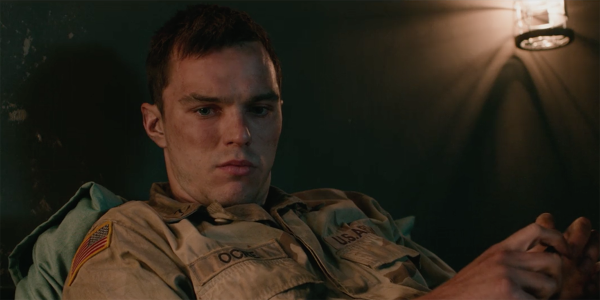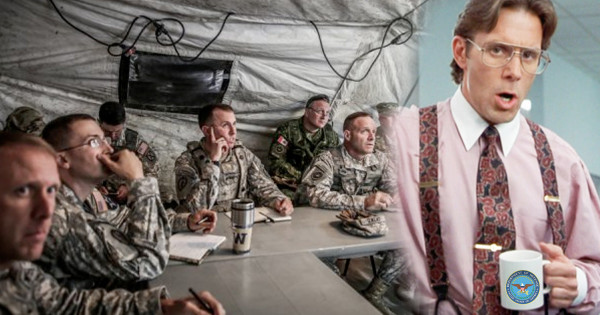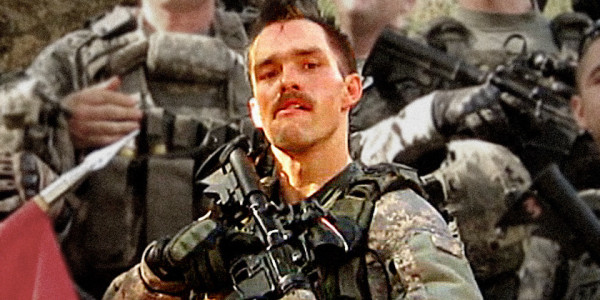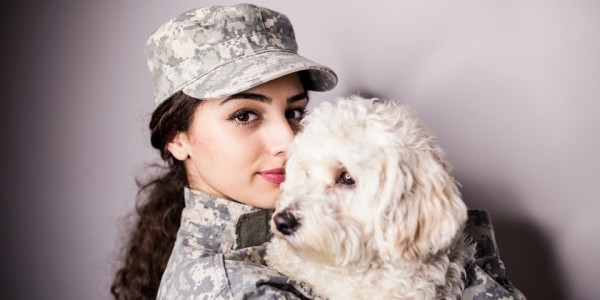For troops and veterans, watching movies and television shows that feature military uniforms can be an exquisite form of torture. These characters often wear the wrong ribbons on their chests or rank insignia on their collars, roll up their sleeves in ways that would never pass uniform standards, and sometimes even wear the wrong camouflage pattern.
These mistakes are so prevalent and so outrageous that many current and former service members actually believe there must be a federal law or Defense Department instruction that requires actors to always wear ridiculously inaccurate military uniforms on screen. How else can one explain why Samuel L. Jackson wore a Batman cape while playing an Army master sergeant in the 2003 film Basic? (Before the crayon eaters start complaining: We know the Marine Corps has boat cloaks and that they are awesome, but this wasn’t the same thing.)
Like so many other things that troops and veterans believe – such as the origin story of the Marine Corps’ “blood stripe” – the idea that Hollywood is somehow legally prohibited from accurately portraying military uniforms is pure myth. The truth is that Hollywood collectively knows less than an E-3 about how to build a ribbon rack or keep a gig line straight. In other words, they suck.
Subscribe to Task & Purpose Today. Get the latest in military news, entertainment, and gear in your inbox daily.
However, this myth has its basis in truth. The section of the U.S. Code — the compilation of federal statutes — that regulates when civilians can wear military uniforms used to contain a clause that said actors could only wear an Army, Navy, Air Force, and Marine Corps “if the portrayal does not tend to discredit that armed force.”
That changed after the Supreme Court ruled in the 1970 Schacht v. United States case that requiring actors who wear military uniforms to portray the armed services favorably infringed on their First Amendment rights to criticize their government.
On Dec. 4, 1967, Daniel Jay Schacht was one of three people who took part in an anti-war skit that was performed several times in front of a military induction center in Houston. Schacht and another actor wore military apparel. One of them would yell “Be an able American” and they would shoot a third actor dressed as a Viet Cong fighter with water pistols that squirted a red-colored liquid, meant to simulate blood. Then Schacht or the other actor dressed as a service member walked up to the person dressed as a communist guerilla and say, “My God, this is a pregnant woman.”
Schacht was convicted for illegally wearing a military uniform and a federal appeals court later upheld his conviction, but the Supreme Court determined that the lower courts’ rulings were only valid if it were legal to punish Schacht for speaking out about the Army and United States’ role in Vietnam.
“Clearly punishment for this reason would be an unconstitutional abridgment of freedom of speech,” Justice Hugo Black wrote at the time. “The final clause of [the law] which leaves Americans free to praise the war in Vietnam but can send persons like Schacht to prison for opposing it, cannot survive in a country which has the First Amendment.”
All of this begs the question: If there is no longer any law that dictates how actors can wear military uniforms on screen, why does Hollywood keep giving us travesties like The Code, a 2019 television series about Marine lawyers that contained so many uniform transgressions that it spawned a parody Twitter account that pointed out just how inaccurate it was?
“Tonight on Da Code: Three junior officers who look like sacks of shit shoved into sacks of shit just stand however the fuck they want in front of a Colonel,” was one such tweet that neatly summarized the show’s problems in a nutshell.
In this case, the Marine Corps offered to help the show’s production team get the actors’ uniforms and grooming standards right, but the showrunners simply weren’t interested, Task & Purpose reported in 2019.
It should be noted that scripted productions that receive technical assistance from the Defense Department tend to portray the military favorably – even glowingly. Examples include The Hunt for Red October, Top Gun, Battle Los Angeles, and Michael Bay’s Transformers movies.
When the military does support movies or television shows, it provides military advisers who are usually on set to make sure the actors’ uniforms and grooming standards are accurate, said Glen Roberts, chief of entertainment media for the Defense Department.
Some agreements between the Pentagon and production teams require casting directors to pick actors who meet the military’s physical standards and have haircuts and facial hair within grooming regulations, Roberts told Task & Purpose.
“The Production Assistance Agreement provides the services the right of review, meaning if something is technically inaccurate, we have the right to require it be corrected or eliminated,” Roberts said. “I am personally not aware of any production that has ever not acted in good faith on this issue.”
Yet, mistakes happen, he acknowledged. In those cases, it’s possible that the production team or Defense Department advisers missed the error – or the production was not supported by the military at all.
“Uniform violations — such as ribbons out of precedential order — do sometimes occur in both DoD-supported and non DoD-supported productions, and can be attributed to a variety of causes: errors or oversights by the production team, purposeful creative decisions made by the production team to fit a particular narrative for the character, and even a lack of availability of ribbons, medals and uniform components on the day of shooting can all be causes of the violation,” Roberts said.
“Interestingly, there actually is a general prohibition against non-military members (including wardrobe departments for production studios) purchasing uniform items on base at military exchanges,” he said. Often, for DoD-supported productions such as Top Gun: Maverick, the Production Assistance Agreement includes a clause allowing for procurement of authentic military clothing articles and related insignia by the production team, for that one, specific production.”
So, the next time you notice a glaring error in a television show or movie depicting service members, just remember there’s no law preventing Hollywood from accurately depicting what military uniforms should look like. Instead, such errors are evidence that Hollywood has the freedom to screw up. And if it still bothers you, feel free to become a military adviser and tell Tom Cruise to never put his hands in his pockets or walk on the grass.
The latest on Task & Purpose
- Russian troops are proving that cell phones in war zones are a very bad idea
- Air Force disciplines C-130 crew for ‘unplanned’ landing to pick up motorcycle in Martha’s Vineyard
- Commandant walks back possibility of Marines skipping boot camp
- Air Force pilots explain why the F-22 Raptor is a ‘beast’ in aerial combat
- Sailors from my old ship are dying by suicide. I may know why
Want to write for Task & Purpose? Click here. Or check out the latest stories on our homepage.



